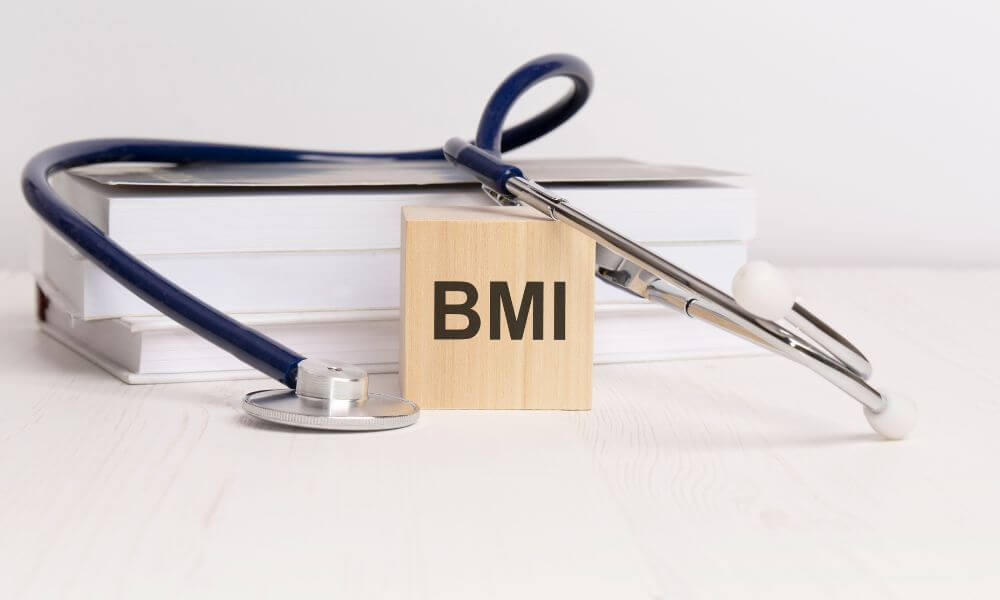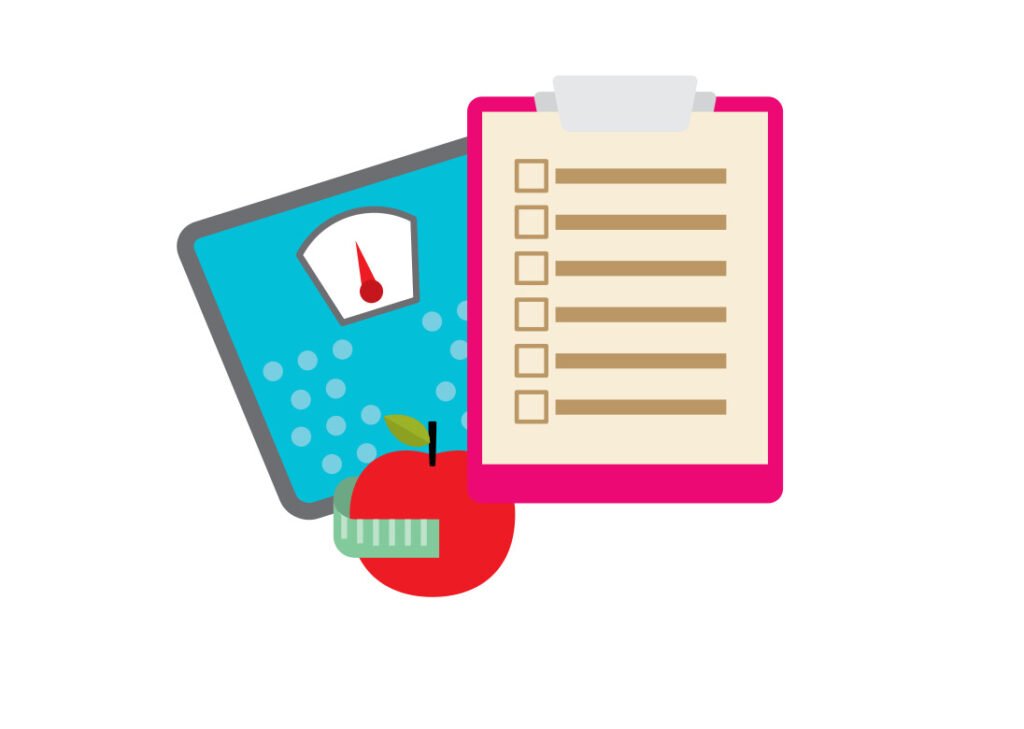If you’ve been hunting for a BMI Calculator in Kg and Feet, you’re in the right place. In under 30 seconds, you’ll get your exact BMI, your category, and the healthy weight range for your height—without any unit confusion. We handle the conversions (1 ft = 12 in, 1 in = 2.54 cm) and apply WHO cutoffs (18.5–24.9 healthy, 25.0–29.9 overweight, ≥30 obesity) so your result is clear and actionable. Stick around—this page gives you the number and what to do next.
Why knowing your BMI helps
- Helps you talk to your doctor using simple, shared numbers.
- Sets a realistic target weight for your height (no guesswork).
- Screens for health risk levels using standardized ranges.
- Guides calorie and activity plans with a concrete baseline.
- Tracks progress over time with one consistent metric.
Scales that measure BMI and body fat
You can go the easy way without the need for calculations and buy a digital BMI scale that tells you straight away your BMI value plus other information about your body composition.
How to calculate BMI in kg and feet
BMI is used to evaluate if you are underweight, overweight, or even enjoying a healthy weight. Since calculation needs only height and weight, it is inexpensive and easy to use for clinicians and the basic public. BMI can be utilized as a screening tool for body fatness however is not diagnostic.
BMI Calculator
BMI Calculator
Quickly compute your Body Mass Index (BMI) and see your category. Adults only (18+). Estimates only.
BMI equation in the metric system
Formula: weight (kg) / [height (m)]2
With the metric system, the formula for BMI is weight in kgs divided by height in meters squared. Because we typically measure height in centimeters, divide height in centimeters by 100 to acquire height in meters.
BMI equation in the imperial system
Formula: weight (lb) / [height (in)]2 x 703
Divide weight in pounds by height in inches, then square and multiply by a conversion factor of 703.
Underweight (BMI < 18.5)
You may not be getting enough calories or protein; rule out medical causes.
Recommendations:
- See a dietitian for a safe gain plan.
- Aim for a +300–500 kcal/day surplus.
- Protein 1.6–2.0 g/kg/day; add healthy fats & starches.
- Strength training 2–3×/week to build lean mass.
- Add calorie-dense snacks (nuts, dairy, smoothies).
- Screen for issues (thyroid, GI, eating disorders) with a clinician.
Healthy weight (BMI 18.5–24.9)
You’re in the healthy range—focus on maintenance and fitness.
Recommendations:
- Balanced plate: protein + veg + whole grains + healthy fats.
- 150+ min/week moderate activity + 2×/week resistance training.
- 7–9 h sleep, manage stress.
- Track waist and fitness (not just weight).
- Annual health check (BP, glucose, lipids).
Take the Free Stress Quiz
Feeling Stressed Lately?
Take our quick and free stress quiz to discover your current stress level and get personalized wellness tips based on your results.
Take the Free QuizOverweight (BMI 25.0–29.9)
Small, steady changes can meaningfully improve health risks.
Recommendations:
- Start a 300–500 kcal/day deficit.
- Protein 1.2–1.6 g/kg/day; 25–35 g fiber/day.
- Steps 7k–10k/day + strength 2–3×/week.
- Limit sugary drinks & ultra-processed snacks.
- Track waist, weight trend, and habits weekly.
- Consider a clinician visit if you have risk factors (BP, prediabetes).
Wrong deficit = no results
Find the calorie deficit that actually burns fat—without crashing your energy. Get a personalized target based on your stats.
Obesity Class I (BMI 30.0–34.9)
A structured plan often improves labs, energy, and mobility.
Recommendations:
- Deficit 500–750 kcal/day; protein 1.2–1.6 g/kg/day.
- Progressive resistance training + low-impact cardio.
- Choose an eating pattern you can sustain (Mediterranean, high-protein, etc.).
- Review meds/conditions (e.g., thyroid, PCOS) with your clinician.
- Work with a dietitian/coach; follow up every 4–6 weeks.
Obesity Class II (BMI 35.0–39.9)
Comprehensive care is recommended to lower higher health risks.
Recommendations:
- Personalized plan: nutrition, exercise, behavior support.
- Discuss evidence-based anti-obesity medications with your clinician.
- Screen & monitor: BP, A1C/glucose, lipids, sleep apnea.
- Set realistic loss: ~0.5–1% body weight/week.
- Consider group programs or digital tools for accountability.
Obesity Class III (BMI ≥ 40)
Multidisciplinary care is ideal; more intensive options may help.
Recommendations:
- Stepwise goals: celebrate non-scale wins (fitness, mobility, labs).
- Medical team: physician + dietitian + exercise + behavior support.
- Consider pharmacotherapy; evaluate for metabolic/bariatric surgery eligibility.
- Optimize sleep, CPAP if needed; manage joint pain to enable activity.
- Frequent monitoring of BP, A1C, lipids, and nutritional status.
Notes: BMI is a screening tool for adults and doesn’t directly measure body fat or account for high muscle mass, pregnancy, or certain medical conditions. For children and teens, BMI is interpreted using age/sex percentiles.
Is BMI accurate?
even if 2 individuals have the very same BMI, their level of body fatness might differ12.
In basic,
- Women may have more body fat than men at the same BMI, so, the BMI calculator in kg and feet for males is different than for females.
- Older individuals with the same BMI as younger adults have more body fat.
- At the same BMI, Black people may have less body fat than Whites, and Asians have more body fat than Whites.
- Athletes have less body fat than non-athletes at the same BMI.
Find Your Ideal Body Weight
Use our Ideal Body Weight Calculator to quickly estimate the healthy weight range for your height, gender, and body frame.
- Find your healthy weight range
- Adjust for height and gender
- Understand BMI relationship
The precision of BMI as an indicator of body fatness also appears to be higher face to face with higher levels of BMI and body fatness.
While a person with a very high BMI (e.g., 35 kg/m2) usually has high body fat, a fairly high BMI can be the outcome of either high body fat or a high mass of bones and muscles.
According to the BMI weight status categories, anyone with a BMI between 25 and 29.9 would be categorized as obese and anybody with a BMI over 30 would be classified as overweight.
Athletes might have a high BMI because of increased muscularity rather than increased body fatness. In basic, a person who has a high BMI is likely to have body fatness and would be considered overweight, however, this may not be true for athletes.
It is likely to have body fatness and would be considered overweight, but this may not apply to athletes.
A trained healthcare provider should perform health assessments to test an individual’s health status and risks.
Check out our latest posts:
- Liquid Diet for Constipation: Quick Relief Plan & Safe Options
- Nutrisystem How Does It Work: Plan Structure, Daily Meals, and Realistic Results
- Intermittent Fasting for Perimenopausal Women: Smart Schedules, Safe Starts, Real Benefits
- Microwave Gluten-Free Mini Pizza
- KETO DINNER IDEAS; SHRIMP WITH GRITS AND ARUGULA
Conclusion
The BMI Calculator in Kg and Feet gives you fast, clear answers without unit confusion—just enter kg and ft/in, and you’ll see your BMI, category, and a healthy weight range based on WHO standards. Use this number as a simple baseline to guide your goals, track progress month to month, and start conversations with your doctor. Remember, BMI is a screening tool—not a full health diagnosis—so pair it with waist measurement, activity level, and how you feel day to day. Ready to take the next step? Run your numbers now, set a realistic target, and use your result to shape smarter nutrition and exercise plans. Your health journey is easier when the data is simple—and the BMI Calculator in Kg and Feet keeps it that way.

